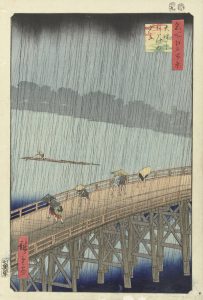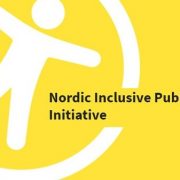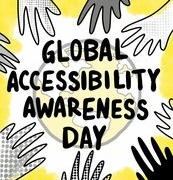The Sound of Silence
One of the most challenging aspects of accessible publishing is understanding how to write immersive image descriptions for visually impaired and print disabled readers. Content providers are often uncertain about where to begin and how to integrate description work into their publishing process. The images included within digital content often remain silent to readers listening in audio format through screen readers, thereby negatively impacting learning outcomes and the joy of reading.
Legal, educational and commercial pressures are intensifying for content providers to now prioritize accessibility. Although resources and guidelines are readily available to help content providers establish accessible production workflows, the lack of available image descriptions continues to be a significant barrier to readers.
In a WebAIM survey conducted in December 2017, the most problematic content-related issues were the availability and quality of alternative text (alt-text) for images.(1) In addition, Bill Kasdorf stated in the January 2018 Learned Publishing special accessibility issue that “all of the publishers I interviewed – even extremely large publishers that have done extensive work on accessibility – find image descriptions to be probably the single biggest issue across all types of content.”(2)
For content providers, the decision comes down to choice. Who should create the descriptions for image content? Should it be the author of the work or a member of the editorial staff? Due to the complexity of the methodology, should it be outsourced to a specialist in a similar vein to indexing? Publishers may delay decision-making as a result of this predicament and elect to keep generic, inadequate and incorrect alt-text “image” tags.
There are a variety of resources to meet accessibility challenges and many companies are seeking to develop solutions. However, image description authoring services are still falling short of the detail necessary to capture image complexity. We can better understand the image description predicament by examining Utagawa Hiroshige’s 1857 print Sudden Shower over Shin-Ōhashi Bridge and Atake.(3)
Microsoft Word includes a publishing tool for automated alt-text. For Hiroshige’s image, Word automatically assigns the following description: “A picture containing building, fence. Description generated with very high confidence.” This incomplete image description highlights the current limitations of alt-text automation.
So, what is the solution if publishers are struggling to find the best way forward and automated technologies generate deficient descriptions? textBOX addresses this challenge. We have a long-standing publishing background and a passion for promoting access for all readers.
The industry needs a simple, workable approach to image description and textBOX delivers it.
The objective of textBOX is to marry the art of immersive description with a scientific approach towards data analytics while adhering to industry standards.
textBOX’s solution is focus/LOCUS – a method for producing high-quality image descriptions. This approach deconstructs the image into key elements and builds the description using a pathway through individual components. The description becomes greater than the sum of its parts.
As the sighted reader will know, Hiroshige’s image is not a “building” or a “fence”, as interpreted by Microsoft Word. A more suitable alt-text description is:
A woodcut print by Utagawa Hiroshige depicts figures scattering during a sudden rainstorm on the Shin-Ōhashi bridge in Edo (now Tokyo) in 1857.
Hiroshige’s image may require a longer, more robust description in circumstances where detail is critically important (e.g., art history books or galleries). The focus/LOCUS method has been designed for this type of description:
The foreground is dominated by a wooden bridge on which seven figures are hurrying to avoid a heavy rainstorm. Two brightly-dressed women are traveling from right to left on the bridge, sheltering under their umbrellas. A man is following closely behind them wearing a conical hat and ducking down beneath the downpour. Three figures hurry in the opposite direction, huddled under a single umbrella. Before them walks a hunched-over figure covering his upper body with a cloak.
In the background, a boatman is steering his log raft along the river. A shadowy line of trees marks the bank of the river. The upper reaches of the picture are filled with ominous dark clouds and dark lines of rain streak across the face of the image. The positioning and postures of the figures in the image give a strong sense of movement and flight from the elements.
The reader’s understanding is increased because they feel the image is tangible and they are involved in the story.
“Writing useful alt-text is a bit of an art,” according to Google.(4) The objective of textBOX is to marry the art of immersive description with a scientific approach towards data analytics while adhering to industry standards. textBOX reveals to publishers that there is an opportunity to enrich their content and promote discoverability through image descriptions.
textBOX is the product of late nights, wide-ranging conversations and meticulous research. The foundation of our business is built on listening closely to the issues that content providers are experiencing and learning from the expertise of industry leaders, colleagues and friends. The accessibility community is overflowing with innovation and collaboration and it is this sense of community that has inspired us to embark on this path.
Inclusive Publishing plays a pivotal role within the accessibility community, the publishing industry and as a core resource for textBOX. We are delighted for the opportunity to share our thoughts and future goals through these pages.
Image description is challenging but it is also a fascinating field. We look forward to listening to content providers and working with the accessibility community to develop solutions and build a future where every image tells a story and every reader experience is equal.
For images, the sound of silence is far from golden.
To learn more about textBOX please visit the textBOX website, read our inaugural soapBOX blog post, or write to us at hello@textboxdigital.com.
References
- WebAIM Screen Reader User Survey #7 Results: https://webaim.org/projects/screenreadersurvey7/
- Kasdorf, B. (2018), Why accessibility is hard and how to make it easier: Lessons from publishers. Learned Publishing, 31: 11-18. doi:10.1002/leap.1146
- Utagawa Hiroshige, 1857. Sudden Shower over Shin-Ōhashi Bridge and Atake from the series One Hundred Famous Views of Edo. Public domain image. Metropolitan Museum of Art, New York https://www.metmuseum.org/art/collection/search/36461
- Kearney, M., Gash, D. and Boxhall, A., Text Alternatives for Images https://developers.google.com/web/fundamentals/accessibility/semantics-builtin/text-alternatives-for-images
This article was kindly submitted by Huw Alexander and Caroline Desrosiers, Co-Founders of textBOX.








